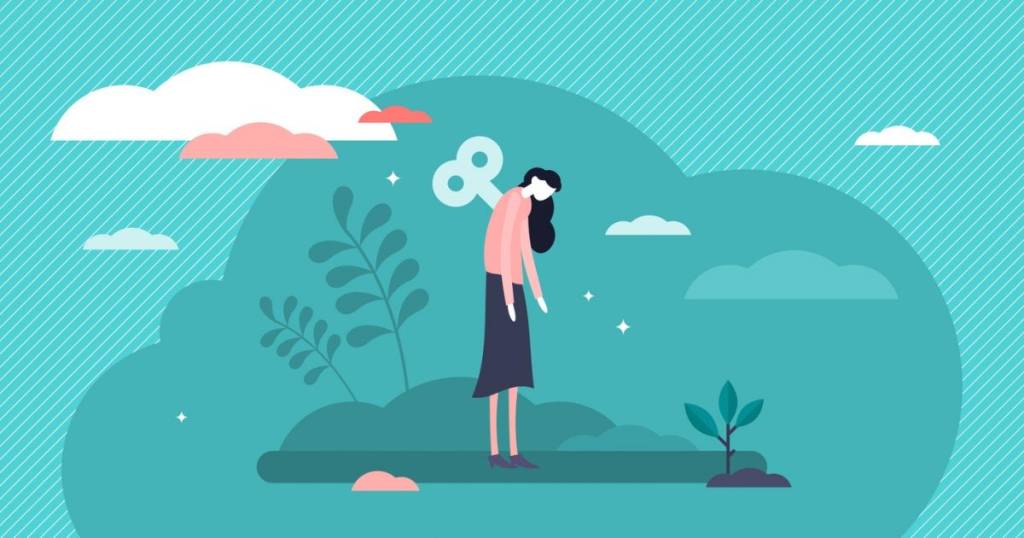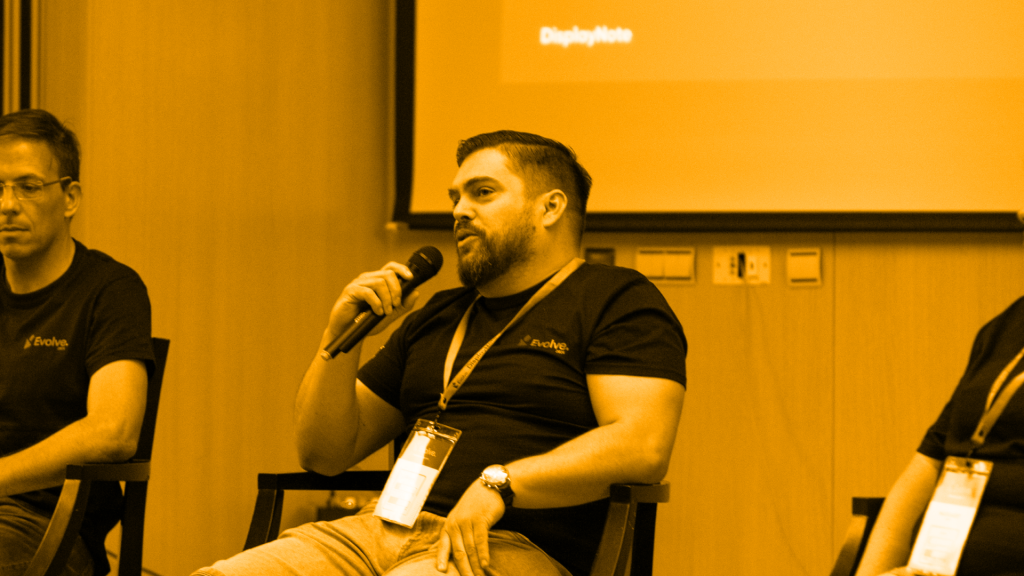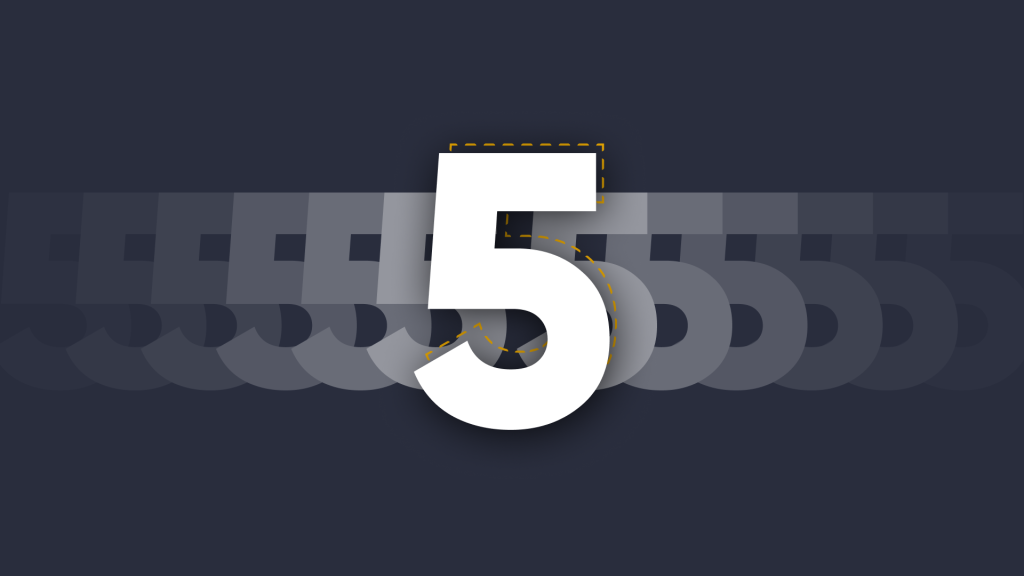
The Science Behind Zoom Fatigue.
 Julie Adams
•
Mar 31, 2021
Julie Adams
•
Mar 31, 2021
This post is written by Julie Adams, a Communication & Content Specialist at DisplayNote. This is the second in our Psychology in Action Blog Series, exploring the research and relationships between psychology, communication, and collaboration.

You’ve probably heard of Zoom fatigue by this point; the exhaustion we experience when communicating with others via video call. As the pandemic forced us all to stay in and keep our distance, the population migrated to digital communication, hailing its ability to keep us all connected. Weekly team meetings, job interviews, family birthdays; all took place on a screen.
But over time, we began to feel a sort of antipathy for these calls, a kind of pre-emptive exhaustion and existential dread at the prospect of clicking a link to join yet another call. Video communication wasn’t all it was cracked up to be; in fact, it was wearing us out.
Behemoth Zoom got a bit of a hard time when it came to labeling this strange exhaustion, but then again, if you’re ubiquitous enough to be named as a cultural phenomenon, things probably aren’t so bad. But why exactly is this long-standing technology having such a physical impact on us all of a sudden? I decided to examine further.
What is Zoom Fatigue?
The phrase ‘Zoom fatigue’ is almost as ubiquitous to 2020 as ‘socially distanced.’ But what defines it?
Zoom fatigue is a phenomenon psychologists have described as the ‘tiredness, anxiety, or worry resulting from overusing these virtual platforms.’
After nearly a full year of video meetings, many of us found ourselves worn out and more likely to hit the decline button on that meeting request. People started to say, ‘let’s grab a call instead,’ or ‘can we switch our cameras off?’.
It’s useful at this point to define ‘mental fatigue.’ Mental fatigue is described as a failure to complete mental tasks that require self-motivation and internal cues in the absence of cognitive impairment or physical fatigue (Chaudhuri & Behan, 2000). In layman’s terms, that means that our brains struggle to focus on work or study without the cause being related to physical tiredness or cognitive impairment.
A core element of ‘mental fatigue’ is the rewards-costs calculation that happens unconsciously in our minds every time we make a decision. When these rewards outweigh the costs, the dopaminergic pathways are activated in our brains (this is composed of the ventral striatum, anterior cingulate cortex, and amygdala for all the budding neuropsychologists out there). Activation of this system in-turn increases alertness, energy, and motivation – all of which decrease fatigue in the body.
Why do we find video-calls more taxing?
It’s hard to point a finger at one sole cause of this mass fatigue. What’s more likely is that we’re experiencing an accumulative effect of lots of different factors at play. In fact, researchers from across many disciplines have stepped forward with various explanations for the phenomenon.
Let’s start with the rewards-cost line of thought. Research using MRIs found that real-life interactions result in greater activation of the dopaminergic pathways than watching recorded messages do. For example, you might feel more uplifted from seeing a friend in person than we do from perhaps a phone call. The same applies to video-conferencing. Video communication gives us less ‘reward’ – which we rely on to increase alertness and energy. This lack of perceived reward-to-cost could, therefore, be what creates the feeling of ‘Zoom fatigue.’

Delays expected
A 2013 study into audio effects found that delays of even milliseconds in sound transmission negatively impacted our perceptions of a speaker. While a 2014 study by researchers in Germany found that delays on phone or conferencing systems negatively shaped our view of the speaker: even delays of 1.2 seconds made people perceive the responder as less friendly or focused.
Eye-contact (or the lack of it) has also been put forward as a contributor. Back in 2000, social scientists coined the phrase ‘gaze awareness’. This refers to our awareness of another person’s gaze or eye contact while communicating. If you’re having a conversation with one or more individuals, eye contact is often used as a non-verbal cue to indicate turn-taking, agreement, or a lack of understanding about something someone has said. We tend to look directly at someone when we’re talking – it shows we’re listening. However, this doesn’t translate well when it comes to video. When we try to look at someone’s eyes during a video-call, our focus is on the screen instead of the camera, giving the illusion that we’re looking elsewhere. This lack of eye contact can leave us feeling like we’re not being listened to or others feeling like they’re not being heard.
Some have suggested the landscape these video-calls are happening against is also to blame. The pandemic has brought with it new stress and anxieties around finances, health, and the future. Stress is a natural drain on our physical and mental batteries. Add to that video-meetings that our brains have to work harder to process, and it’s no surprise we’re left feeling worn out.
Stage Fright
Unlike real-life conversations, on video-calls, we can see our own face on the screen, which brings an awareness of being watched. This adds a performative element to the whole process, and being on stage is highly demanding in terms of our resources. The pressure of ‘performing’ on calls can actually trigger a stress response from our sympathetic nervous system, activating our fight or flight mode and dispensing hormones like adrenaline and cortisol around the body. This is very costly on the body’s resources, leaving us feeling mentally drained and physically depleted afterward.
If you find yourself feeling anxious before a call, taking a few deep, controlled breaths will activate your parasympathetic nervous system (which controls your rest and relax response), helping to calm your nerves. As the system is comprised of two parts, activation of the parasympathetic system suppresses the sympathetic nervous system. This is why you’ll see many sports stars take a long breath before a penalty kick or important game; it helps them to focus their attention and feel calmer.
How can we avoid Zoom fatigue?
One way to cut down on your call time is to assess whether a video-call is actually necessary in the first place. If the same outcome can be achieved by picking up the phone or file sharing with detailed notes attached, opt for that instead.
Whether or not cameras are switched on should also be optional; it’s far less demanding on our brains to process just audio than video and audio combined. For one-on-one meetings, voice-only calls may be a less taxing alternative for both parties.
Another factor may be your workload and downtime outside of meetings; many of us have taken on a hyper-productivity mindset in response to the threat of redundancy and a lack of physical, managerial oversight. We want to prove that we can be as productive at home and add value to the organization. But in doing this, you also run the risk of wearing yourself down. Make sure to keep a balance between your workload and your wellbeing – take breaks, set a switch-off point in the day, and set yourself reasonable to-do lists. You can find more tips on how to look after your wellbeing while working from home here.
Meetings of the future
Going forward, we’re likely to all want some face-to-face time with our colleagues when it’s safe to return to the office. Traditional meetings will continue as they always did. Where needed, video-conferencing will also continue as it did before the pandemic. We will see more of a cross-over between the two, i.e., Hybrid Meetings, as more people choose to work remotely permanently and teams in different countries collaborate together. We’ll also see meeting spaces adapting to facilitate this more flexible way of working.
Discover how the Launcher meeting room solution can prepare your business for hybrid meetings.
Want to stay in the loop?
Keep up-to-date with everything DisplayNote – including new releases, job openings, and customer giveaways.
Don’t worry, we’ll not spam you and we’ll never share your email with anyone






